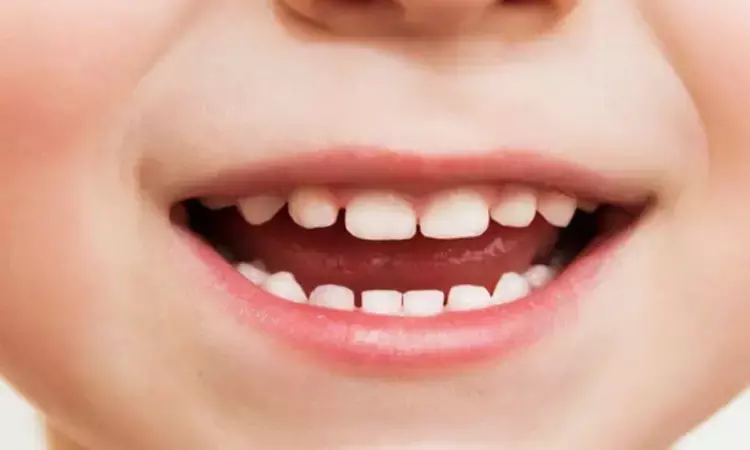- Home
- Medical news & Guidelines
- Anesthesiology
- Cardiology and CTVS
- Critical Care
- Dentistry
- Dermatology
- Diabetes and Endocrinology
- ENT
- Gastroenterology
- Medicine
- Nephrology
- Neurology
- Obstretics-Gynaecology
- Oncology
- Ophthalmology
- Orthopaedics
- Pediatrics-Neonatology
- Psychiatry
- Pulmonology
- Radiology
- Surgery
- Urology
- Laboratory Medicine
- Diet
- Nursing
- Paramedical
- Physiotherapy
- Health news
- Fact Check
- Bone Health Fact Check
- Brain Health Fact Check
- Cancer Related Fact Check
- Child Care Fact Check
- Dental and oral health fact check
- Diabetes and metabolic health fact check
- Diet and Nutrition Fact Check
- Eye and ENT Care Fact Check
- Fitness fact check
- Gut health fact check
- Heart health fact check
- Kidney health fact check
- Medical education fact check
- Men's health fact check
- Respiratory fact check
- Skin and hair care fact check
- Vaccine and Immunization fact check
- Women's health fact check
- AYUSH
- State News
- Andaman and Nicobar Islands
- Andhra Pradesh
- Arunachal Pradesh
- Assam
- Bihar
- Chandigarh
- Chattisgarh
- Dadra and Nagar Haveli
- Daman and Diu
- Delhi
- Goa
- Gujarat
- Haryana
- Himachal Pradesh
- Jammu & Kashmir
- Jharkhand
- Karnataka
- Kerala
- Ladakh
- Lakshadweep
- Madhya Pradesh
- Maharashtra
- Manipur
- Meghalaya
- Mizoram
- Nagaland
- Odisha
- Puducherry
- Punjab
- Rajasthan
- Sikkim
- Tamil Nadu
- Telangana
- Tripura
- Uttar Pradesh
- Uttrakhand
- West Bengal
- Medical Education
- Industry
Oral hygiene status plays major role in caries development, Study says

Recent research has revealed that occurrence of future caries in baseline caries-free participants is related to oral hygiene status and that children with baseline caries-free status should be treated with preventive interventions of different intensities and frequencies.
The study is published in the Journal of Clinical Epidemiology.
Caries is the most common oral disease in children, and it seriously affects children's oral health and even their whole-body health; furthermore, it causes harm to children's mental health. The high incidence of caries has not only caused a serious burden to individuals and families but has also become one of the health burdens of society as a whole.
Therefore, Siqi Yan and colleagues from the Stomatological Hospital, Southern Medical University, Guangzhou, People's Republic of China conducted the present study with the aim to investigate the new development of caries among preschoolers in northern Guangdong and to assess caries-related factors to distinguish groups with different caries risk levels.
Baseline data were recorded for participants from September to November 2019, and participants were reexamined from September to November 2020. A longitudinal observation of 11,973 preschoolers was conducted. The simplified debris index (DI-S) and decayed-missing-filled tooth (dmft) index values were obtained for each participant.
The following results were shown-
- Factors associated with whether caries would occur in the future and one-year increase in dmft (Δdmft) included baseline dmft, baseline DI-S, and baseline age.
- The risk ratio (RR) of caries occurrence and the number of teeth with new-onset caries were 4.482 (95% confidence interval, 4.056– 4.957) and 2.945 (2.742– 3.165) in the participants with baseline dmft ≥ 3, which were higher than those with baseline dmft =1 or 2.
- In the baseline caries-free group, whether caries would occur in the future was related to the baseline DI-S (95% confidence interval, 0.022– 0.062).
- The caries incidence of maxillary central incisors (27.9%) was the highest among teeth of preschoolers without caries at baseline, whereas the caries incidence of mandibular first deciduous molars (42.7%) was the highest among teeth of preschoolers with caries at baseline.
Therefore, it was concluded that "baseline dmft is a good predictor of future caries. Children with baseline caries-free status, baseline dmft > 0, and baseline dmft ≥ 3 should be treated with preventive interventions of different intensities and frequencies. The occurrence of future caries in baseline caries-free participants is related to oral hygiene status. Measures to prevent caries on smooth surfaces, such as topical fluoridation, should be applied to all preschoolers. Preschoolers with caries at baseline may be given priority for pit and fissure sealing."
Dr. Nandita Mohan is a practicing pediatric dentist with more than 5 years of clinical work experience. Along with this, she is equally interested in keeping herself up to date about the latest developments in the field of medicine and dentistry which is the driving force for her to be in association with Medical Dialogues. She also has her name attached with many publications; both national and international. She has pursued her BDS from Rajiv Gandhi University of Health Sciences, Bangalore and later went to enter her dream specialty (MDS) in the Department of Pedodontics and Preventive Dentistry from Pt. B.D. Sharma University of Health Sciences. Through all the years of experience, her core interest in learning something new has never stopped. She can be contacted at editorial@medicaldialogues.in. Contact no. 011-43720751
Dr Kamal Kant Kohli-MBBS, DTCD- a chest specialist with more than 30 years of practice and a flair for writing clinical articles, Dr Kamal Kant Kohli joined Medical Dialogues as a Chief Editor of Medical News. Besides writing articles, as an editor, he proofreads and verifies all the medical content published on Medical Dialogues including those coming from journals, studies,medical conferences,guidelines etc. Email: drkohli@medicaldialogues.in. Contact no. 011-43720751


